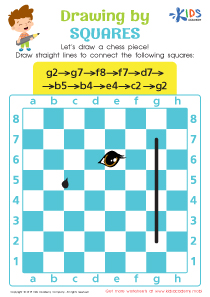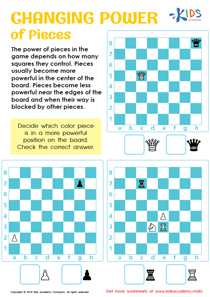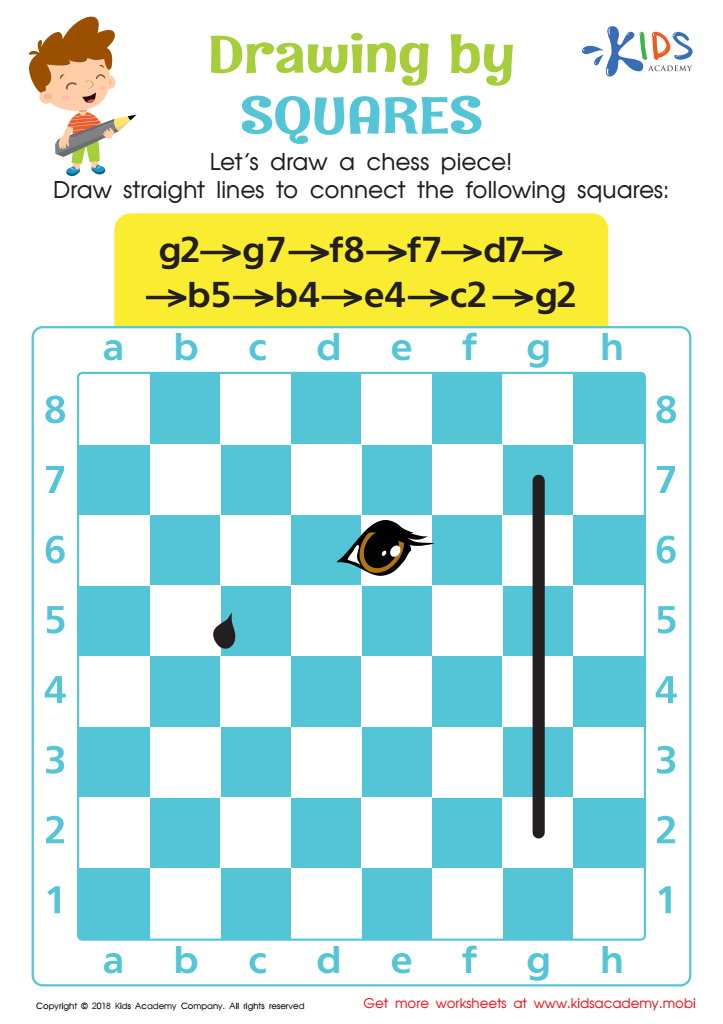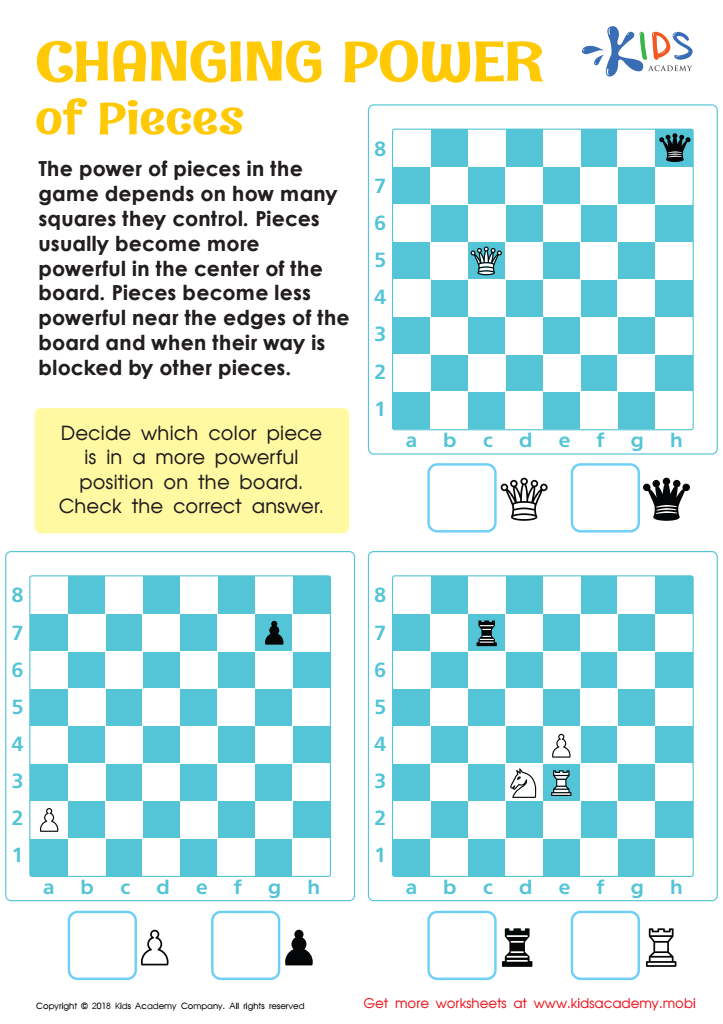Names of Squres and the Center - Lesson for Preschool, Chapter - Chess Basics
In the "Names of Squares and the Center" lesson, preschool students embark on an engaging journey into the world of chess, focusing on understanding the chessboard's layout and the pivotal role of its center. This lesson forms a foundational unit in the Chess Basics chapter and is designed to inculcate essential chess knowledge early on.
Students will begin with "Place of Power. Part 1," where they will learn to identify and name the squares on the chessboard, a crucial skill for navigating the game's landscape. The "Drawing by Squares Worksheet" activity will then allow them to apply this knowledge creatively, enhancing their spatial awareness and memory through fun, interactive exercises.
Moving on to "Place of Power. Part 2," the lesson shifts focus to the strategic importance of the board's center, emphasizing why controlling these central squares can lead to a stronger position in the game. Lastly, the "Changing Power of Chess Pieces Worksheet" introduces how the value and power of chess pieces can vary depending on their placement on the board.




-
Activity 1 / Place of Power. Part 1
-
Activity 2 / Drawing by Squares Worksheet
With your child’s newly acquired chess playing skills and square naming knowledge, can you test their abilities a bit further with this worksheet? See if your child can use all their new knowledge to draw an actual chess piece. Look at the chessboard in the picture. There are squares at the top showing your child which way to move. The task is to draw straight lines to connect the given squares. After correctly drawing the lines, your child should end up with the outline of a chess piece!
-
Activity 3 / Place of Power. Part 2
-
Activity 4 / Changing Power of Chess Pieces Worksheet
Each chess piece carries a different level of power on the chessboard. The power of pieces in the game depends on how many squares the chess piece controls. When pieces are in the centre of the board, they usually have more power. The pieces at the edges of the board or blocked by other pieces are usually at their minimum power. Ask your child to look at the worksheet and show you which chess pieces are in a more powerful position.



